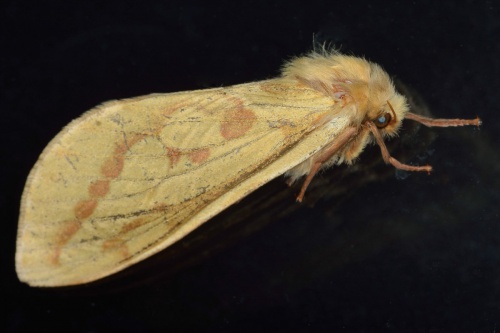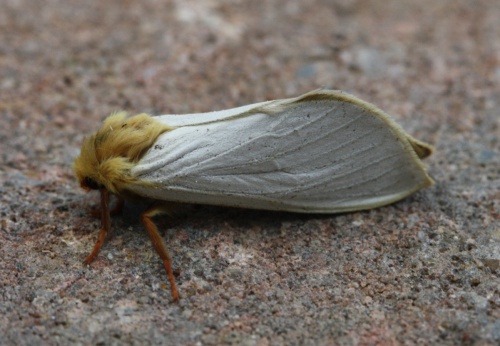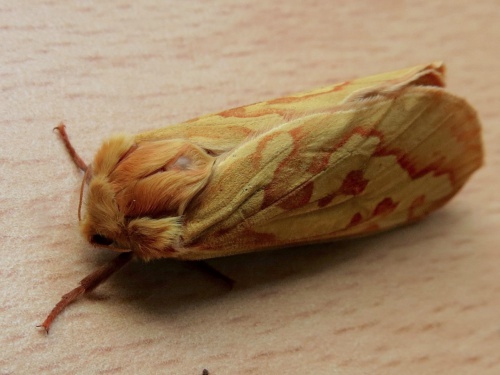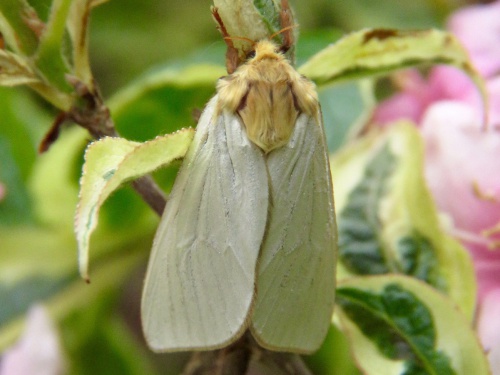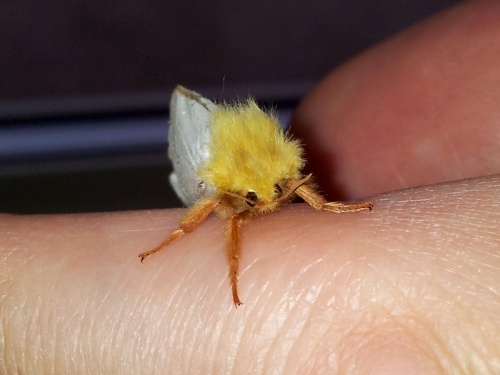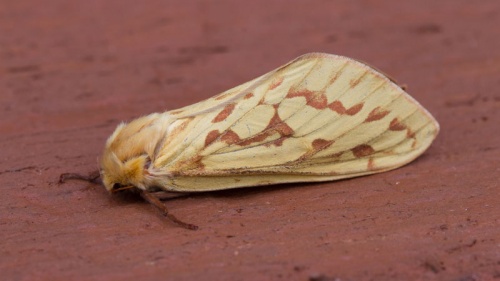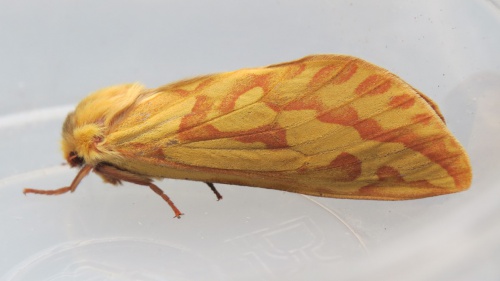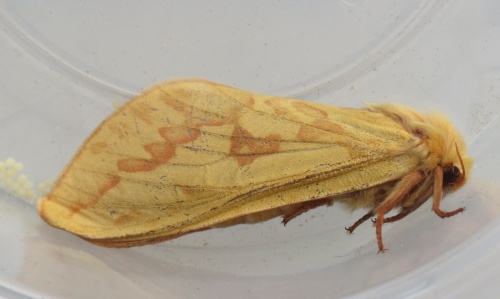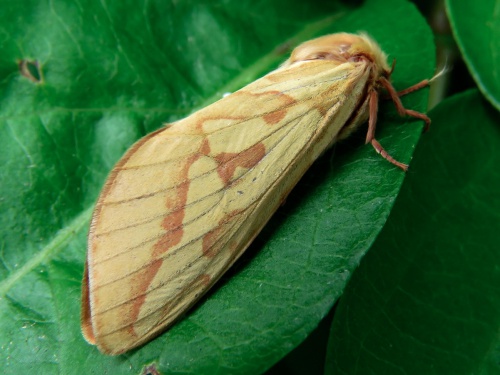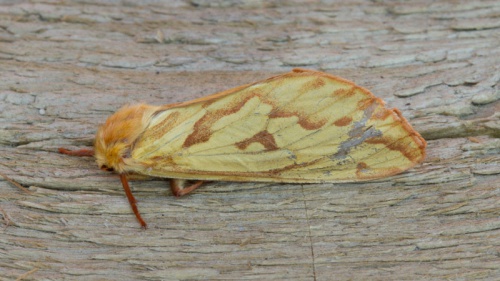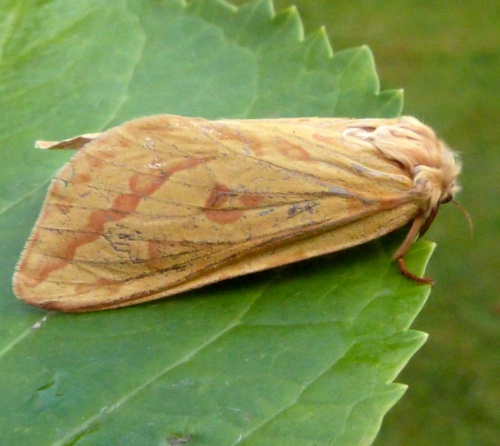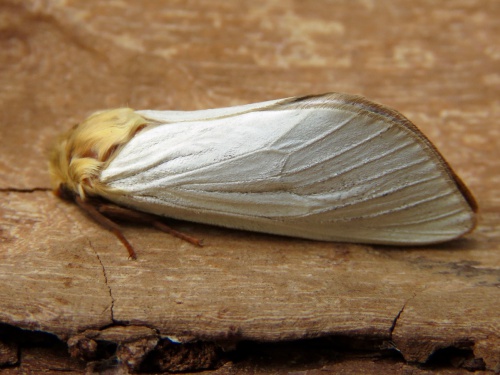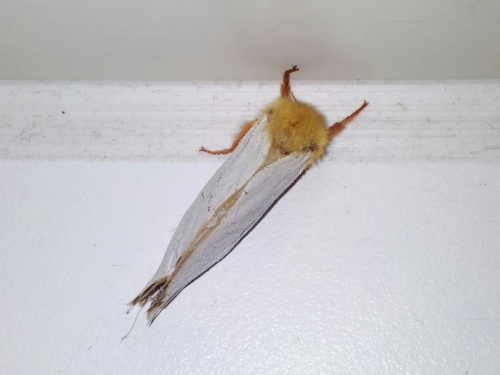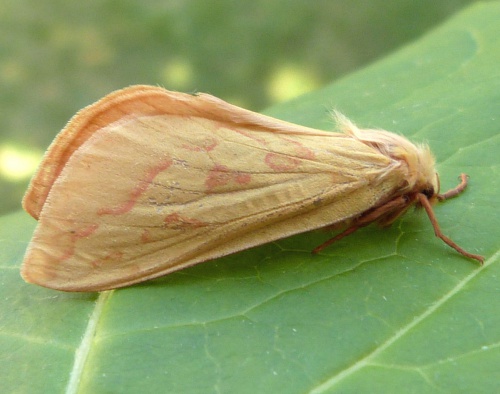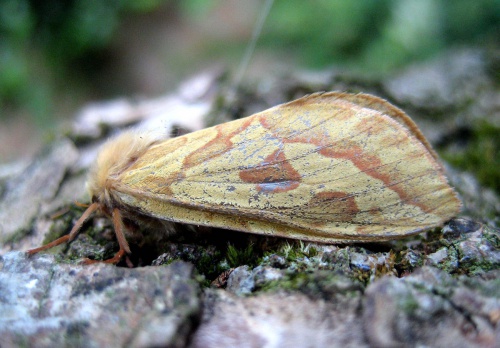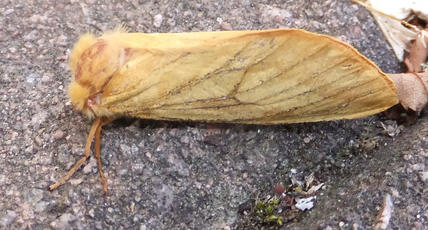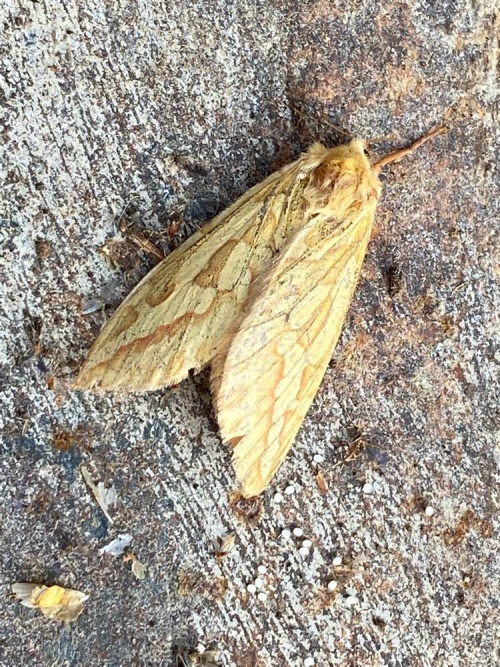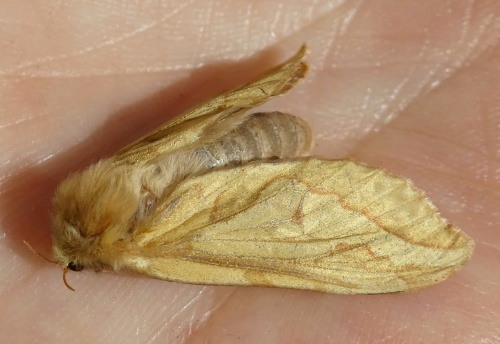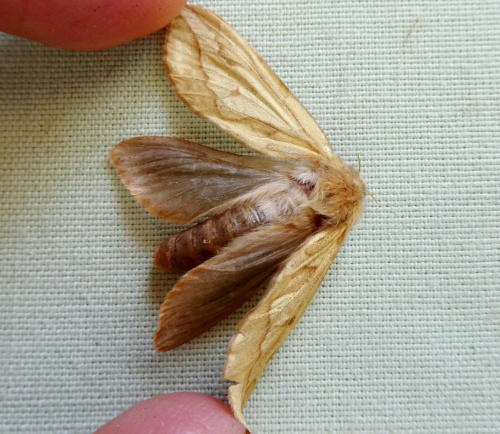Ghost Moth - Hepialus humuli
Wingspan around 50 mm. The English name 'Ghost' comes from the white males, which can sometimes be seen at dusk, 'hovering' over grassy areas. The females are quite different, being yellow, marked with orange.
Rough meadows and grassland.
The adults fly during June and July.
The larvae feed underground on the roots of grasses and small plants. The males have leks in grassy places on downland and in meadows where they fly in numbers at dusk and the females wander, presumably on egg-laying missions.
A fairly common species over much of Britain. In a recent survey to determine the status of all macro moths in Britain this species was classified as common.
Still quite common in Leicestershire and Rutland but possibly declining in our area. L&R Moth Group status = A (common and resident).
Leicestershire & Rutland Map
Enter a town or village to see local records
MAP KEY:
Yellow squares = NBN records (all known data)
Coloured circles = NatureSpot records: 2020+ | 2015-2019 | pre-2015
UK Map
Species profile
- Common names
- Ghost Moth
- Species group:
- Moths
- Kingdom:
- Animalia
- Order:
- Lepidoptera
- Family:
- Hepialidae
- Records on NatureSpot:
- 124
- First record:
- 13/06/2003 (Skevington, Mark)
- Last record:
- 13/07/2023 (Higgott, Mike)
Total records by month
% of records within its species group
10km squares with records
The latest images and records displayed below include those awaiting verification checks so we cannot guarantee that every identification is correct. Once accepted, the record displays a green tick.
In the Latest Records section, click on the header to sort A-Z, and again to sort Z-A. Use the header boxes to filter the list.


